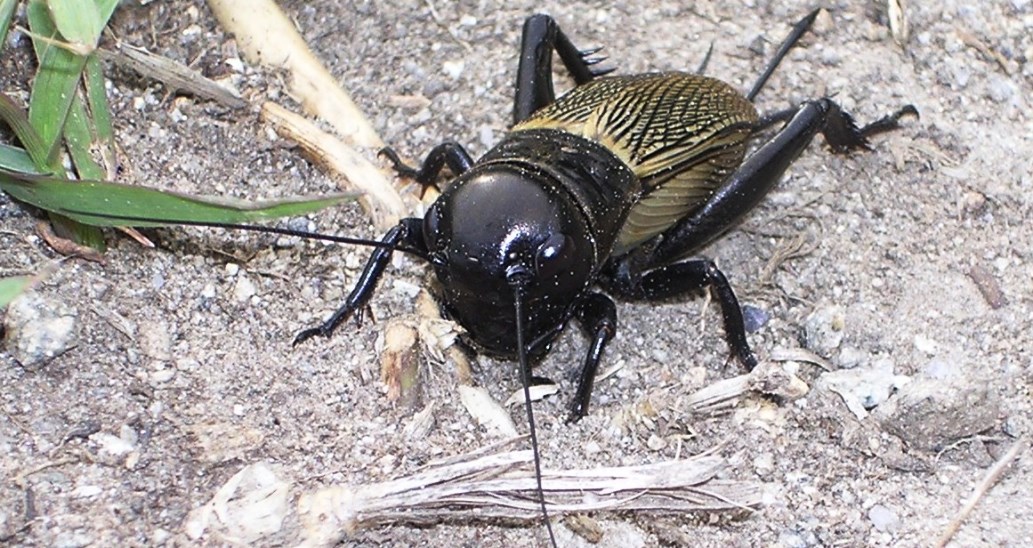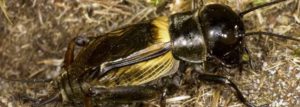In the UK, the field cricket (Gryllus campestris) has been lost from a major part of its historic range, due to agricultural changes resulting in a loss of shifting systems, lack of disturbance by livestock and increased rates of succession.
By the 1980s it was confined to one site in West Sussex with less than 100 individuals and was expected to go extinct.
As I crunch over heathland in search of the elusive insect, the song fills the air, as if conjured up by a magician. My companion, Mike Coates, the warden here at RSPB Farnham Heath, beams with delight.
Earlier, before setting out for the reserve, he’d warned me that the insects are rare, and might not perform on cue. The song of the field cricket was once a familiar soundtrack on the heaths and grasslands of south east England. However, the sound has fallen silent in many parts of the country.
That’s changing though, and the evening music is experiencing a renaissance. Hayley, a volunteer at the reserve, is helping to survey the singing male crickets. “I think it’s just restoring things back to how they should be,” she says. “It’s part of the life cycle. These [crickets] will be food for other animals, which are native to this area, and it will bring other local animals back and really restore the heath to its former glory.”
In 1992, a programme of reintroductions commenced to sites across the counties of Surrey, Sussex, and Hampshire in England, funded by English Nature’s Species Recovery Programme.
The species is flightless, and thus unable to migrate long distances. It therefore does not commonly recover on its own from local extinction.
In 2010, the Royal Society for the Protection of Birds (RSPB) contributed to this program by translocating field crickets, under license from Natural England, to an area of restored heathland on RSPB’s Farnham Heath reserve, thereby extending the occupied range. This was very successful with a population of over 300 individuals becoming established in just 6 years.
In 2017-2020 we will be building on this work through the National Lotttery funded Back from the Brink programme, by establishing a second colony at Farnham Heath, restoring heathland at RSPB’s Pulborough Brooks reserve, and establishing a new colony there, to increase the robustness of the local population.
The work is funded by the National Lottery‘s Back from the Brink program, and Natural England’s Species Recovery Programme with the RSPB’s support.
Feature photo of field cricket by Roberto Zanon via Wikipedia.


